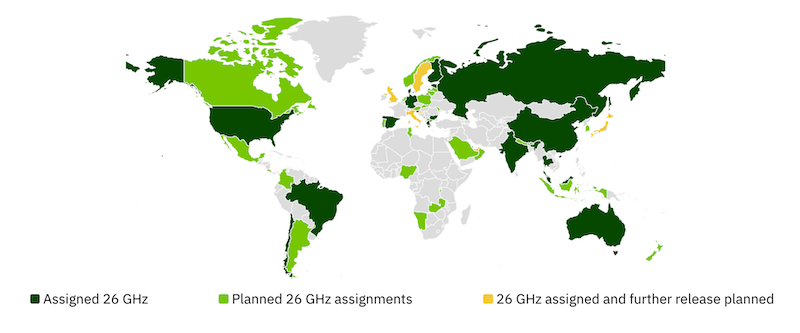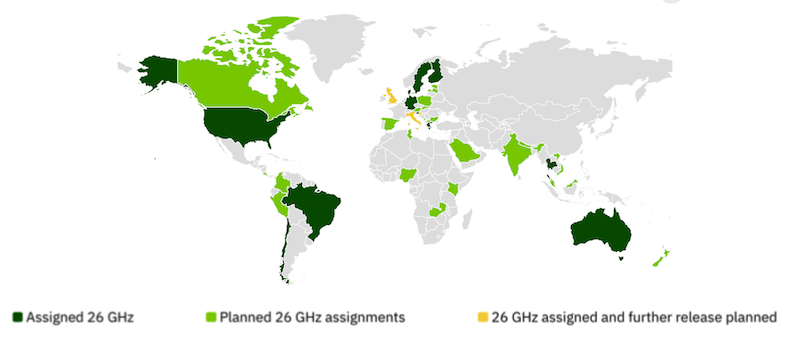Blog
26 and 28 GHz: what has changed in the past 18 months?
Our 26 and 28 GHz Benchmark - updated to include developments since January 2022 - shows steady progress in the assignment of the two bands but also some setbacks.
- There has been a 43 per cent increase in countries assigning the 26 and 28 GHz bands in the past 18 months (from 46 to 66).
- Thirty nations have now assigned 26 GHz or 28 GHz spectrum or both, while 36 nations are planning assignments.
- The strongest momentum is in Europe, with 28 countries focused on this activity, up from 19 in 2022.
- Several nations have moved from the planning to the assignment stage including Bulgaria, Estonia, India and Spain.
- Japan, having previously assigned 28 GHz spectrum for national and local use, is now planning an assignment of 26 GHz spectrum.
- Eight new countries have assigned or plan to reserve 26 GHz or 28 GHz spectrum for localised use, bringing the total in this category to 24, up from 16 in 2022.
- Spain and China have awarded spectrum for private networks, with many nations including Canada, Latvia, Norway and Oman planning to do so.
- There have also been some backward steps:
- South Korea has revoked 28 GHz licences due to operators failing to meet buildout obligations.
- Auctions held in Montenegro and Northern Macedonia saw 26 GHz spectrum go unsold


The full Benchmark is available to Spectrum Research Service subscribers here
By |
PolicyTracker
